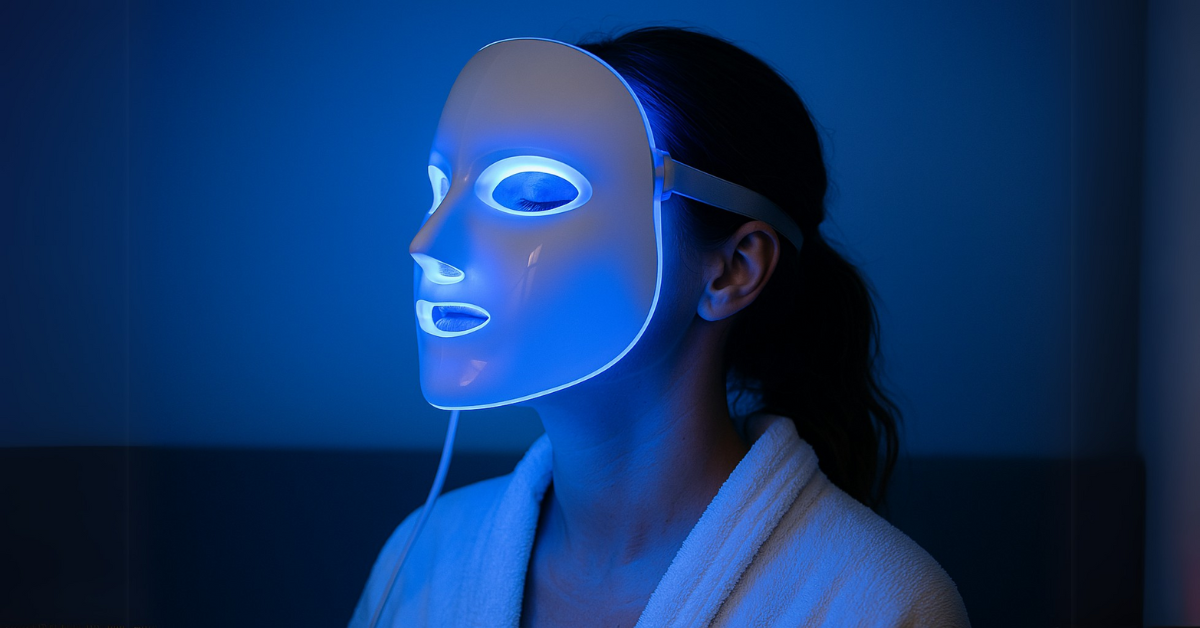We tend to think of sagging skin as something that just… happens when you hit your 40s or 50s. As if one day you wake up and your jawline isn’t where you left it. But here’s the thing: skin laxity is about more than age. It’s a slow burn, and it starts earlier than you think.
Yes, time plays a role—but so do UV exposure, collagen breakdown, loss of facial fat, tech neck, and even stress. And waiting until you’ve lost significant firmness to start treating it? That’s like only buying an umbrella after you’ve been caught in the storm.
This dermatologist-edited guide explores the real causes of sagging and how to treat it proactively, not reactively—with smart routines, targeted ingredients, and future-forward devices.
Why Skin Sags: It’s Not Just Gravity
Sagging occurs when the skin loses its structural integrity—mainly due to the breakdown of collagen, elastin, and hyaluronic acid. But multiple factors chip away at those pillars over time:
- Collagen loss: Begins as early as your mid-20s, accelerating each decade.
- Sun damage: UV rays degrade collagen and elastin, leading to crepey, thin skin.
- Facial fat redistribution: Loss of volume in cheeks and temples contributes to the “falling” effect.
- Repeated motion + gravity: Expression, sleeping positions, and gravity all contribute.
- Inflammation and stress: Cortisol spikes and chronic inflammation affect skin repair.
- Poor barrier health: A weak skin barrier can’t retain hydration, making sagging more noticeable.
So no, sagging isn’t just about turning a certain age. It’s about how well you’ve supported your skin’s framework—and how early you started doing it.
What Early Sagging Looks Like (and Why You Might Miss It)
Sagging starts subtly. You might notice:
- A less-defined jawline
- Skin that doesn’t “bounce back” as easily
- Slight hollowing under the eyes or cheeks
- Nasolabial folds becoming more pronounced
- Foundation settling into creases that didn’t exist before
And here’s the kicker: by the time sagging is visible, it’s already well underway beneath the surface. That’s why prevention is everything.
Smart Strategies to Treat (and Prevent) Sagging Skin
Treating sagging skin isn’t about reversing the clock—it’s about reinforcing the structure you have. Here’s how to do it smarter, not later.

1. Radio Frequency (RF) Therapy
One of the most effective at-home and in-office treatments for early skin laxity. RF uses heat energy to stimulate collagen and elastin production deep in the dermis.
Why it works:
- Tightens existing collagen fibers
- Boosts new collagen production
- Improves skin density and firmness
Use a clinically validated home RF device 2–3x per week. Results compound over time—think 8 to 12 weeks minimum.
2. Microcurrent for Muscle Tone Support
While RF works on the skin matrix, microcurrent targets the underlying facial muscles—like Pilates for your face.
Why it works:
- Firms and lifts facial contours
- Improves circulation and lymphatic drainage
- Enhances product absorption and glow
Best used 3–5x per week with a conductive gel. Start early for tone maintenance before visible sagging sets in.
3. Peptides and Growth Factors
Topical peptides help mimic the signals your skin naturally sends to produce collagen and elastin. Some newer products also include epidermal growth factors (EGFs) to support cellular turnover.
Key ingredients to look for:
- Matrixyl 3000: Boosts firmness and smoothness
- Tripeptides: Help rebuild structural proteins
- EGFs: Stimulate skin regeneration and bounce
Use daily in serums and layer under moisturizer or SPF.
4. Retinoids: The Gold Standard
Vitamin A derivatives (retinol, retinaldehyde, tretinoin) help stimulate collagen and speed up cell turnover—which thickens the dermis and improves elasticity.
Why it works:
- Increases fibroblast activity
- Softens fine lines and surface sagging
- Smooths skin texture
Start 2–3x per week and build up. Always use SPF daily when on retinoids.
5. LED Red Light Therapy
LED red light penetrates the skin to stimulate fibroblasts, reduce inflammation, and enhance healing. It won’t lift like surgery, but it supports the environment collagen and elastin need to thrive.
Why it works:
- Boosts ATP and cellular energy
- Improves skin tone and texture
- Supports barrier function and hydration
Use 3–5x per week. Combine with a collagen-boosting serum for synergy.
6. Facial Massage + Lymphatic Drainage
Manual techniques help increase circulation, reduce fluid retention, and train facial muscles to hold a lifted shape (temporarily, but visibly).
Try:
- Gua sha tools
- Ice rollers
- Facial yoga techniques
Great as a daily or weekly ritual, especially for those with puffiness or jaw tension.
7. Barrier Support + Deep Hydration
A weak or dehydrated skin barrier will exaggerate sagging. Skin that lacks moisture looks dull, deflated, and tired—even if the collagen is there.
Your essentials:
- Hyaluronic acid to plump
- Ceramides to lock in moisture
- Squalane to smooth and nourish
Use hydration-focused products daily, layered from lightest to heaviest.
What NOT to Rely On
- Facial fillers for everything: They restore volume, not structure, and can contribute to long-term sagging when overdone.
- Lifting creams alone: They can hydrate and smooth, but no topical alone can reverse laxity.
- “One and done” treatments: Sagging is progressive. Maintenance is key.
When to Start?
Now. Prevention always works better than reversal. Starting supportive treatments in your late 20s to early 30s can delay visible sagging for years. And if you’re already noticing changes? Don’t panic. You’re still ahead of the game.
Final Thoughts: Lift Smarter, Not Later
Sagging skin doesn’t show up out of nowhere—and treating it isn’t about chasing youth. It’s about supporting your skin’s natural structure with smart, layered tools that build resilience over time.
With consistent use of targeted activities, energy-based devices, and a little muscle memory magic, you can keep your contours sharper, longer—without relying solely on injectables or surgery.
Because treating sagging smarter means one thing: you stay in control. Not gravity.





